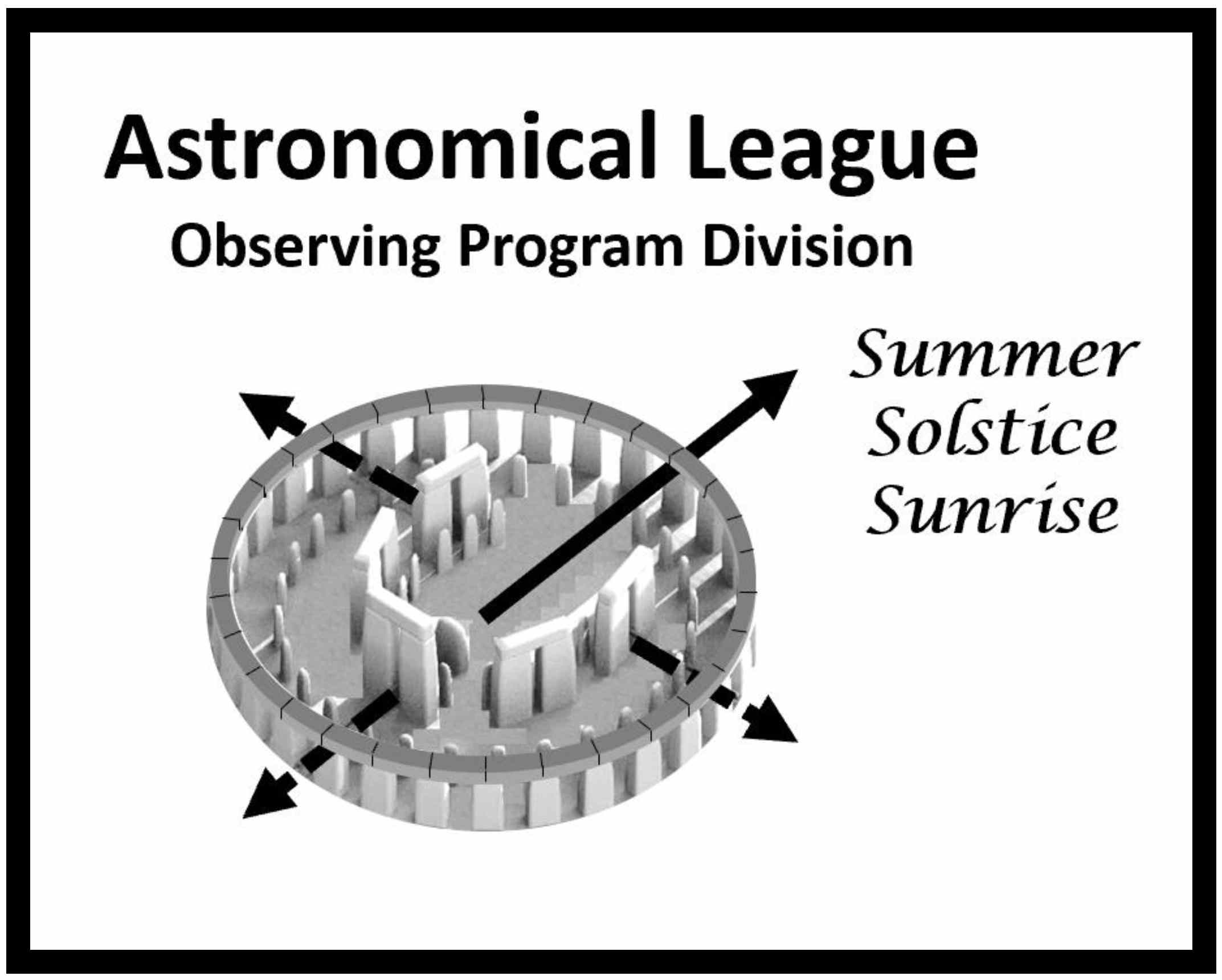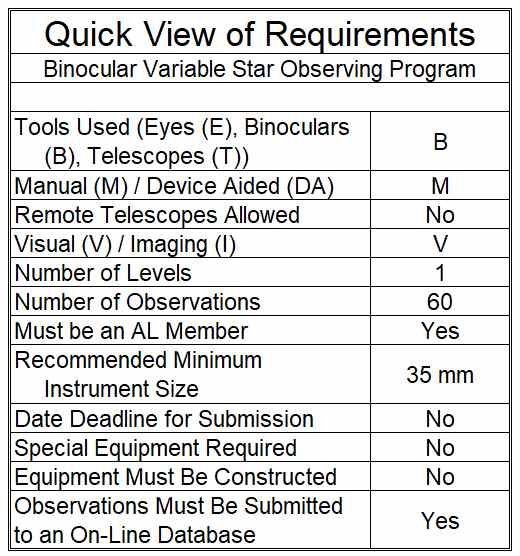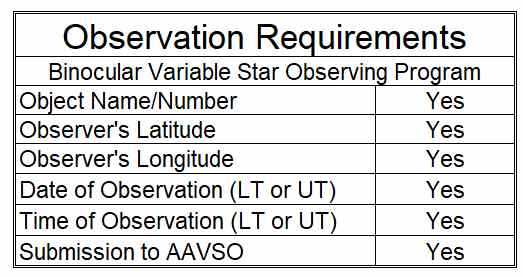Binocular Variable Star Observing Program
Binocular Variable Star Observing Program Coordinator:Robert “Rocky” Togni |
  |
OverviewThe Astronomical League and American Association of Variable Star Observers (AAVSO) would like to present an entry-level binocular program for observing Variable Stars. It serves as a good way to introduce variable observation, improve observing skills, and supply meaningful Astronomical Data to professionals and amateurs around the world. The program uses the AAVSO Binocular program http://www.aavso.org/aavso-binocular-program to supply the list of stars to observe and charts to use them. Data obtained is submitted to AAVSO for analysis. Variable stars are objects whose light is not constant. The observer’s goal is to determine the brightness of the star when compared to stars of fixed brightness in or near the same field of view. |
 |
Definition of Binoculars Allowed for Observations
The Astronomical League defines a binocular telescope as an observing device with two optical tubes and two eyepieces, where the eyepieces can be replaced with eyepieces of different focal lengths. “Bino-Viewers” have a single optical tube, but two eyepieces. “Bino-Viewers” and Binocular Telescopes may be used in any Observing Programs that are telescope-based. They may not be used in binocular programs.
Observing devices with two optical tubes and two eyepieces, where you cannot change the eyepieces, are binoculars. Binoculars may be used in any Observing Program requiring telescopes or binoculars. Most binoculars do not have sufficient magnification to replace telescopes.
Requirements and Rules
This certification is available to members of the Astronomical League, either through their local astronomical society or as members at large. If you are not a member and would like to become one, check with your local astronomical society, search for a local society on the Astronomical League Website, or join as a Member-at-Large .
To qualify for the Binocular Variable Star Program certificate and award pin, complete these requirements:
|

|
Upon verification of your submission and of your active membership in the Astronomical League, your recognition (certificate, pin, etc.) will be sent to you or to the awards coordinator for your society, as you specified. Your name will also appear in an upcoming issue of the Reflector magazine and in the Astronomical League’s online database. Congratulations. Good luck with your next observing challenge.
Binocular Variable Star Observing Program Coordinator:
Robert “Rocky” Togni
876 Copperfield Cove
Heber Springs, AR 72543
eaquilae@hotmail.com
Notes:
Equipment: Any pair of binoculars can be used. The wider angle the better because you can get more comparison stars into the field. 7×50 is a good choice.
Charts: When printing out charts using the Variable Star Plotter (VSP), start with the chart parameters to the right of the list of Binocular Program Stars.
http://www.aavso.org/aavso-binocular-program
These are recommended starting values that can be modified to fit your observing style. If you are observing with binoculars from the northern hemisphere select North up and East left to get the proper orientation on printed charts. Observers in the southern hemisphere will need to use other orientations.
You may need a good star atlas to find the general vicinity of your Binocular Variable. Preparation is very important. Locate your variables in your star atlas or other aid BEFORE you go outside. AAVSO has some constellation charts that may be helpful, see: http://www.aavso.org/online-resources
Other Information: In the field, you will want a red light to review your charts and keep your eyes “dark adapted.” Attached is a log sheet for keeping up with your observations or may create your own log sheets.
Practice memorizing star patterns to avoid going back and forth to your charts. The more observations you do, the better you’ll get at it. Pretty soon you’ll be out-observing your old friends and writing down data in a few minutes just using charts for comparison star values.
Note the recommended minimum time between observing variables as described on the AAVSO website:
http://www.aavso.org/suggested-observing-cadences-variable-star-types
After completing your Astronomical League Binocular Variable Star Observing Program, check out the AAVSO Variable Star Observing Program and Carbon Star Observing Program. You may want to continue submitting your observations to the AAVSO. Make this an exciting and rewarding part of your permanent observing routine. Consider joining the AAVSO.
Citizen Science: If you enjoyed this Observing Program, and look forward to doing more observations to submit to the national or international database, then we invite you to participate in the Astronomical League’s Citizen Science Program. This is an extension of this Observing Program and only requires you to do what you have been doing; observing and submitting those observations. For more information about this opportunity, please go to the website: Citizen Science Program.
Links:
- VSOP Log Sheet (PDF)
- VSOP Log Sheet (Excel)
- Variable Star Binocular Pin




